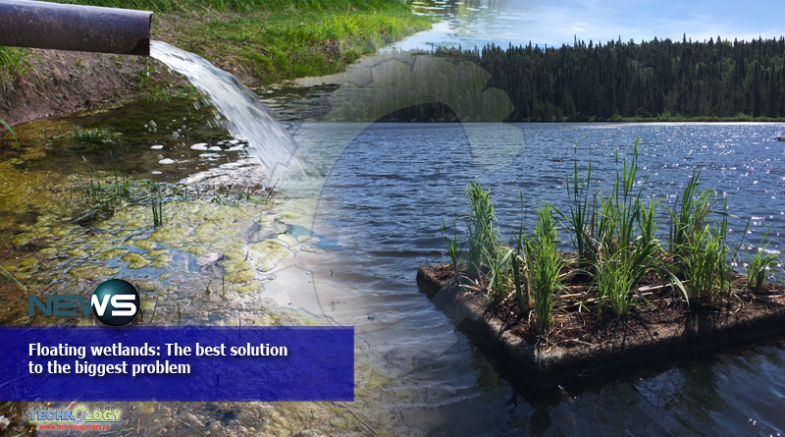Floating wetlands: The best solution to the biggest problem
Published on by Water Network Research, Official research team of The Water Network in Case Studies
The biggest threat to the ecosystem and biodiversity of nowadays is industrial waste and untreated sewage water, for this the best solution is floating wetlands.

There were so many methods designed to treat polluted and contaminated water but because of the high cost these are practically unfeasible to carry on in a developing country like Pakistan. But this problem has been solved, by a group of scientists at the National Institute for Biotechnology and Genetic Engineering (NIBGE) under the supervision of Dr. Muhammad Afzal, by developing a low-cost water treatment method alternative to high-cost methods. They have designed floating wetlands (vegetative mats) that flow over the contaminated water and plants extract pollutants from water effectively.
‘floating treatment wetlands’ (FTWs), the technology has made remarkable progress and showed promising results in treating contaminated water like sewage and industrial wastewater containing hydrocarbons and heavy metals. The solution has displayed promising results in cleaning sewage, factory effluent and even water contaminated with hydrocarbons and heavy metals.
Construction and Methodology
Dr. Azal and his team designed this remarkable technology using aluminum frames and polyethylene insulation rolls. Specific plants like para grass, kallar grass, southern cattail, and common reed, are allowed to grow on aluminum frames hydroponically.
This FTW setup is now ready to float over contaminated water. The roots of these plants dipped into water and then absorb pollutants and extract them from water, in this way it purifies water from dreadful contaminants.
The environment-friendly FTWs started showing promising results in just the second year. After three years, the team noticed a remarkable improvement in almost all water-quality indicators. Specifically, the mats remarkably lessen the amount of grease, oil, sulfates, heavy metals and microbiological contaminants.
According to the research, the wetlands lessen 79 percent of chemical oxygen demand (COD), 88 percent of biochemical oxygen demand (BOD) and 65 percent of total dissolved solids (TDS). COD values reveal the amount of biodegradable and non-biodegradable substances present in water while BOD tells the level of only biodegradable matter.
High COD and BOD values depict the presence of a high quantity of pollutants and lower values depict that the water is comparatively clean. The COD and BOD values of drinking water are almost zero.
This team extends its workplace and installed it at Raijan in Chakwal district, where the water is full of heavy metals and hydrocarbons contaminated due to oil and gas exploration. Subsequently it went successful and it reduced the hydrocarbon and heavy metal content by over 80 percent within the first 18 months. Moreover almost all plants survived and grow well in that toxic environment.
According to Dr. Afzal and his team, the FTWs they have been designed are comparatively cheaper than commercially available wetlands. Their assessment also suggests their wetland solution will be durable for as much as 15 years.
Consequences of wastewater
Pakistan is one of the top 5 countries that get 90 percent farmland irrigated by wastewater across the globe. Contaminated materials passed from water to vegetables and crops and in this way these unwanted materials enter into our food chain which causes dreadful effects on living animals and human beings.
A study conducted in Sialkot and wazirabad district in which researchers found a remarkable high level of heavy metals like cadmium lead and chromium and it was found that the land in which these crops were grown was irrigated by sewage water.
Cadmium is one of the harmful heavy metal and its excessive intake cause kidney and lung failure and cause weakening of bones and consequently cause frequent fractures in childhood and adults. Nickel another metal found in those plants causes neurological, immunological, reproductive and developmental disorders in the human body.
Taxonomy
- Wetlands
- Constructed Wetlands
- Floating Treatment Wetlands